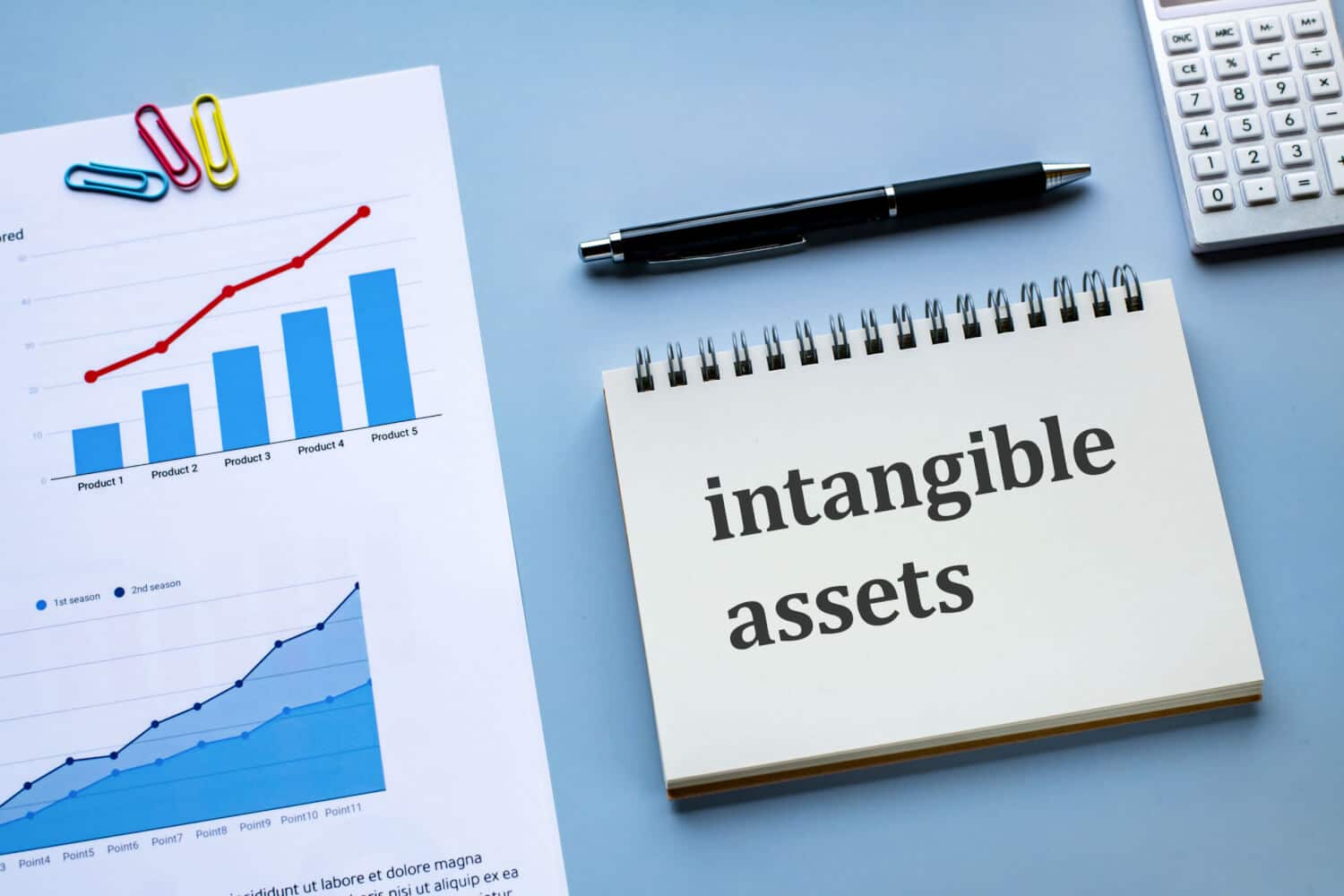Amortization of intangible assets is a routine accounting procedure, not a strategic focus for small businesses. It’s a method to spread out the cost of intangible assets like patents or trademarks over their useful life.
What is an Example of Intangible Assets?
Intangible assets include non-physical resources like:
- Brand names
- Customer relationships
- Patents
- Proprietary technology
These assets contribute to a business’s value, but their financial worth diminishes over time, necessitating amortization. Intangible assets typically end up on a company’s books after a merger or acquisition.
Suppose you purchase a business for $10M, but the business only has $6M in assets on the books. You are paying $4M for intangible assets like the book of business, supplier relationships, and brand value. Upon closing the acquisition, you would recognize these intangible assets on the books and begin amortizing their value.
Notice there is little objective validation of the value of intangibles; you cannot easily price them on an open market or compare them to alternatives for sale. Instead, they are created as an accounting “plug” to facilitate double-entry bookkeeping standards.
How Long Can I Amortize Intangible Assets?
The period of amortization of intangible assets is determined by their expected useful life, typically ranging from 3 to 20 years. This is tracked in an amortization schedule and maintained by your internal accountants. The specific duration depends on factors like the nature of the asset and regulatory guidelines, and some assets are eligible for accelerated amortization.
Similar to depreciation, amortization has different treatment for taxes versus GAAP financial statements. As a result, when given the option, your accountant should amortize an intangible asset faster for taxes and slower for company books. This tactic maximizes book earnings while minimizing tax burdens.
Amortization in Financial Statements
This accounting process appears on the income statement as an expense, lowering net income. Yet, it’s important to understand that this reduction is a reflection of accounting rules, not an actual cash expense or an actual operational cost. That’s why businesses are often valued using EBITDA, which removes amortization expenses.
Is Amortization of Intangibles Important?
For most small business owners and managers, the amortization of intangible assets is not important. Amortization is a non-cash expense, meaning it doesn’t involve an actual cash outflow. It doesn’t impact EBITDA, the primary metric for assessing a company’s profitability, especially in mergers and acquisitions. It’s also outside the management’s control, set by accounting standards rather than business decisions. As a result, you will rarely read business tips surrounding the amortization of intangible assets.
Try not to confuse amortization of intangible assets with amortization of prepaid expenses, a key monthly accrual that improves understanding of operating expenses. Amortization of prepaid expenses is very important for businesses that pay annual fees for services like SaaS or insurance.
For small business owners, the key takeaway is that while amortization of intangible assets is part of accounting compliance, it shouldn’t be a priority in your strategic planning or financial decision-making.
Looking for business tips on critical financial metrics? Read more to find out if your business is financially healthy.
This article was written by a CFOshare employee with assistance from generative AI for rhetoric, grammar, and editing. The ideas presented are a combination of the author’s expertise, original ideas, and industry best practices.




